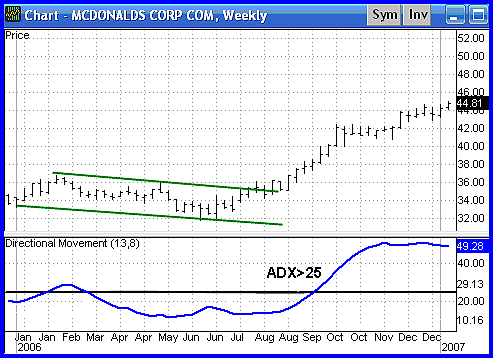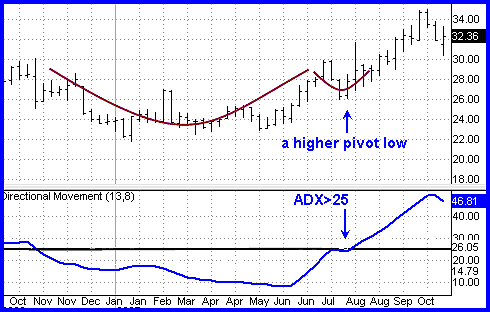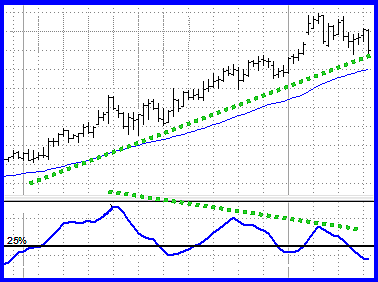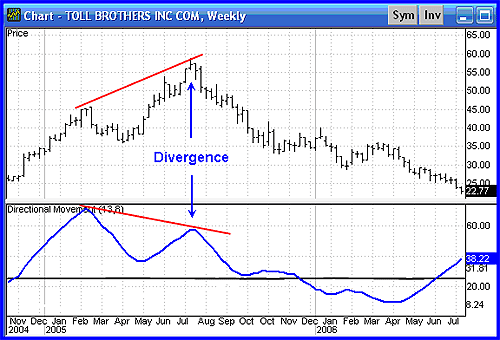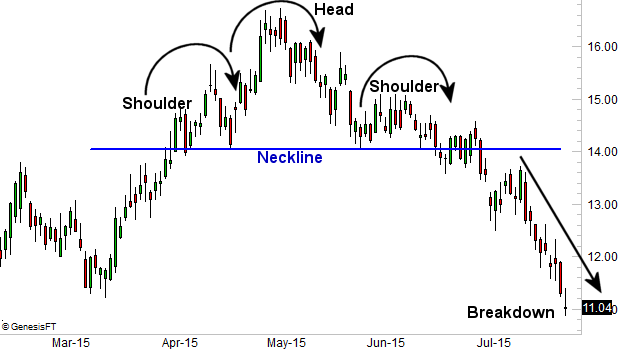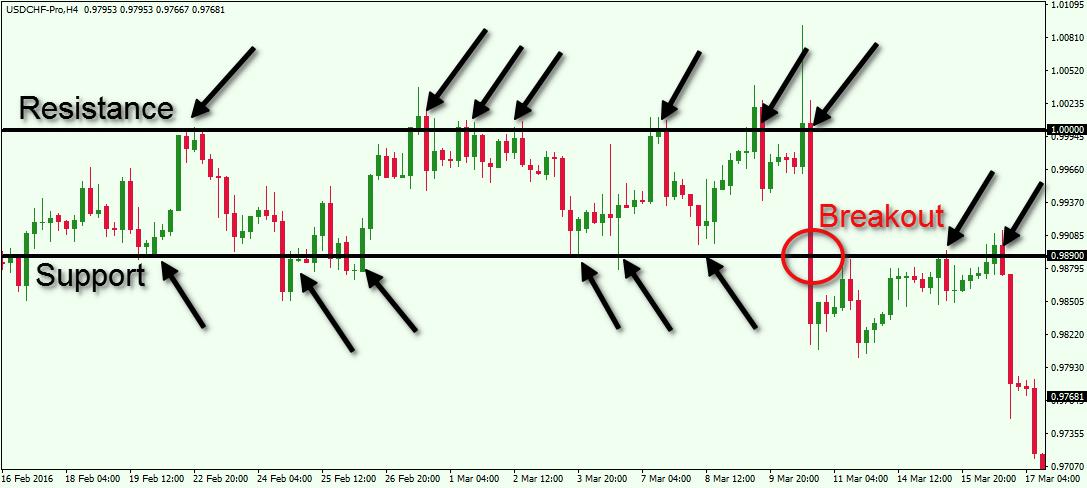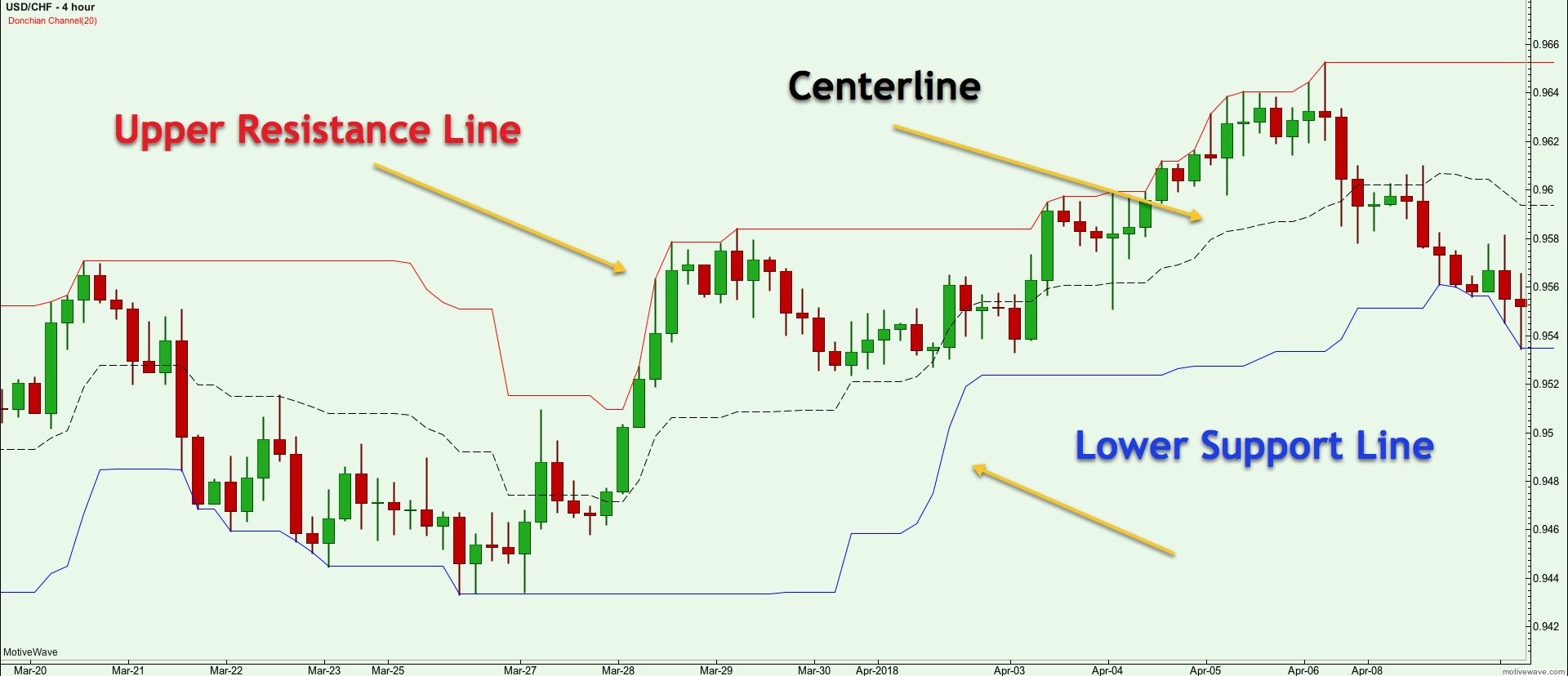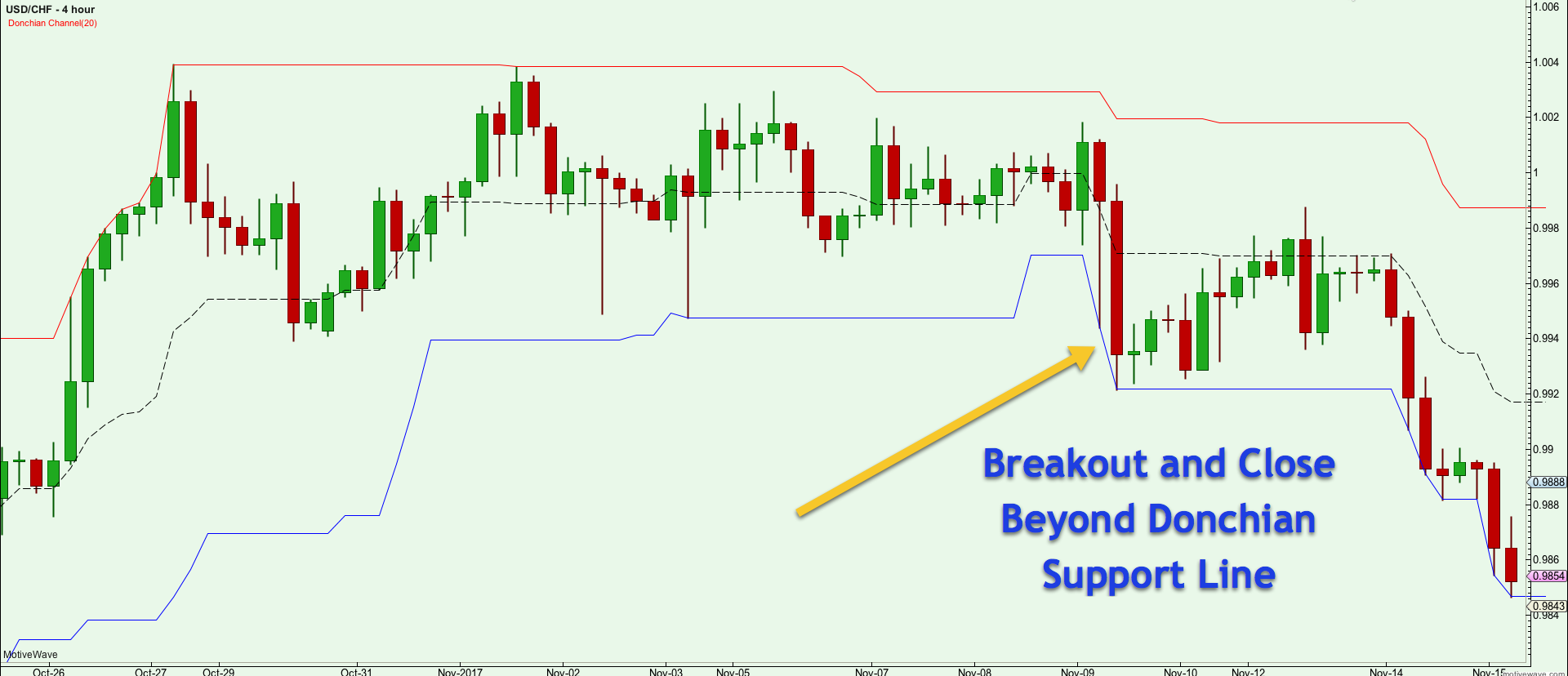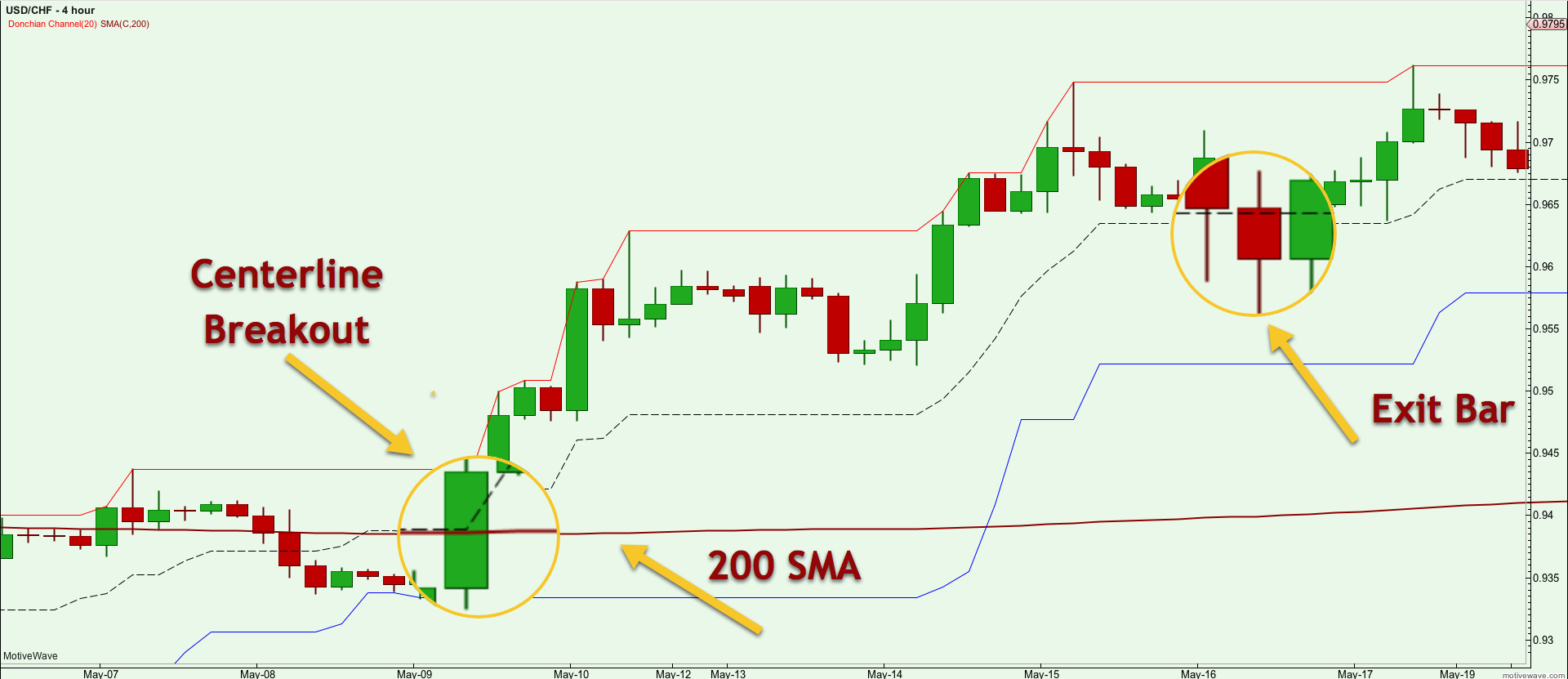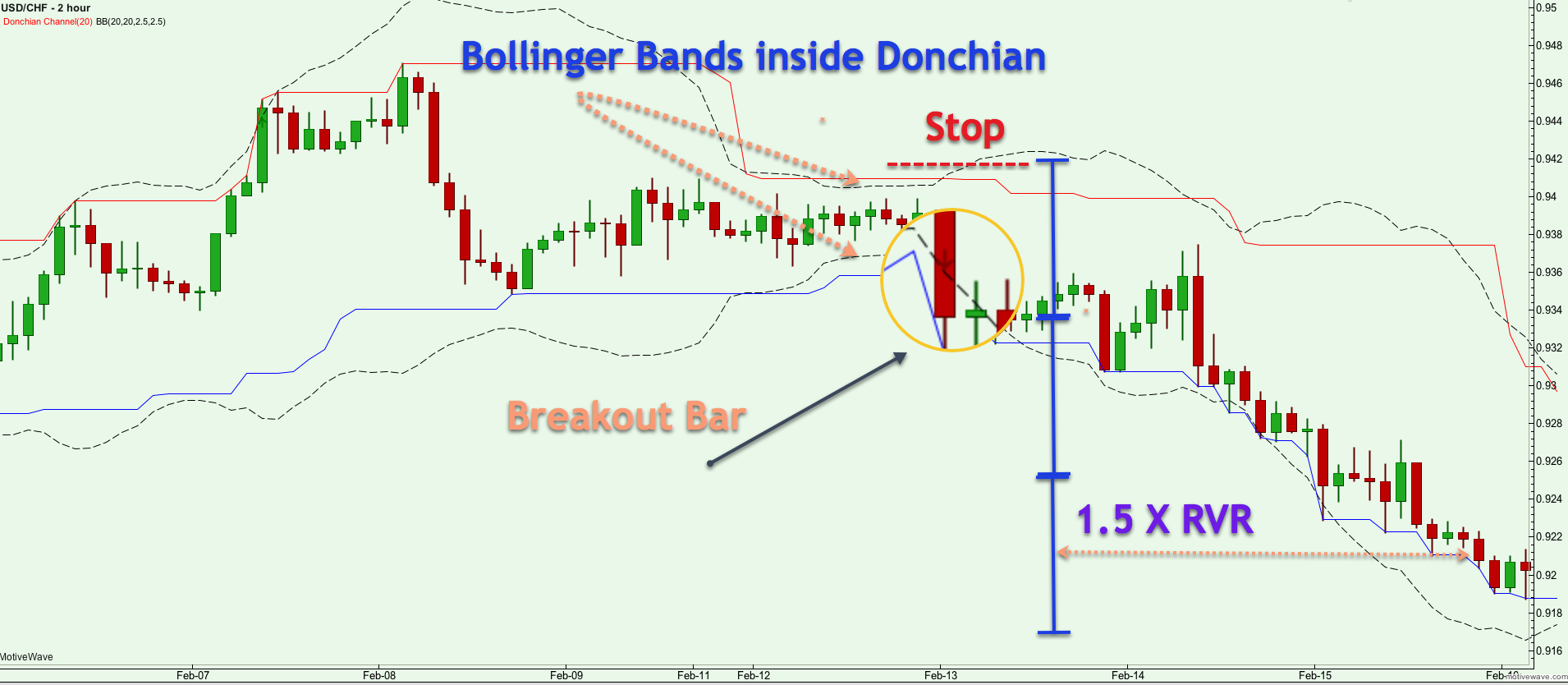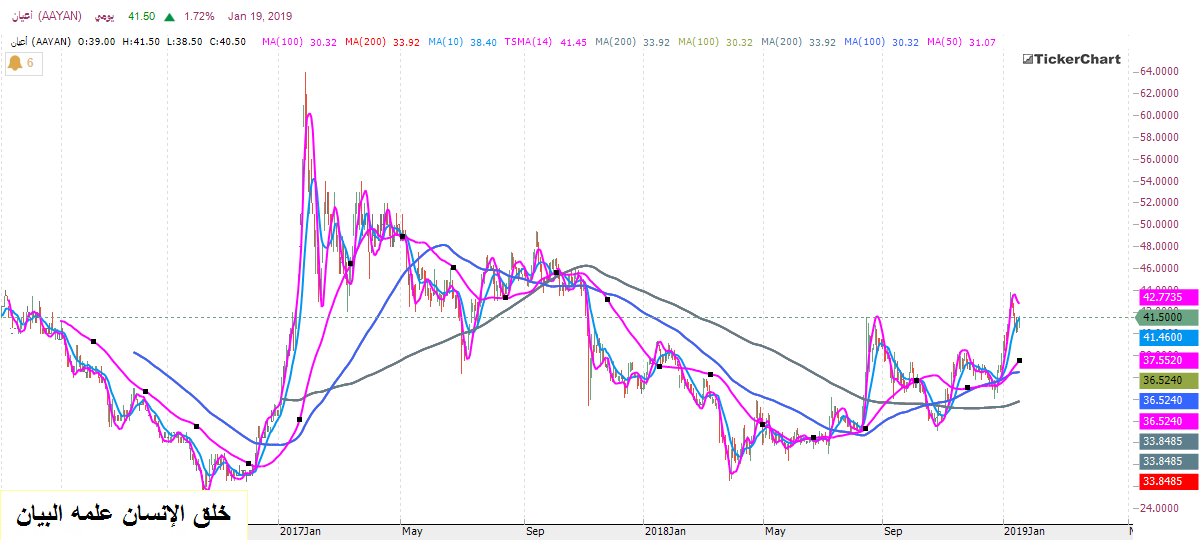Capturing Profits Using Donchian Channel Breakouts
FOREX TRADING ARTICLES
Twitter 0Tweet !function(d,s,id){var js,fjs=d.getElementsByTagName(s)[0];if(!d.getElementById(id)){js=d.createElement(s);js.id=id;js.src="//platform.twitter.com/widgets.js";fjs.parentNode.insertBefore(js,fjs);}}(document,"script","twitter-wjs");" style="box-sizing: border-box; position: absolute; top: 12px; left: 16px; width: 105px; min-height: 15px; text-align: left; line-height: 15px; bottom: 10px;">Facebook 0Google+0 (function() { var po = document.createElement("script"); po.type = "text/javascript"; po.async = true; po.src = "
https://apis.google.com/js/plusone.js"; var s = document.getElementsByTagName("script")[0]; s.parentNode.insertBefore(po, s); })(); " style="box-sizing: border-box; position: absolute; top: 12px; left: 16px; width: 105px; min-height: 15px; text-align: left; line-height: 15px; bottom: 10px;">
Breakout trading is a time tested strategy that has been used by some of the largest traders and hedge funds in the industry. There are a multitude of ways that a retail trader can incorporate a breakout style into their trading plan.
One of the oldest and simplest technical indicators used to trade breakouts is the Donchian Channel. In this lesson, we will learn the nuts and bolts of the Donchian Channel indicator, and then construct some trading strategies around it.
Download the short printable PDF version summarizing the key points of this lesson….
Click Here to Download
Introduction to the Donchian Channel
The creator of the Donchian channel was a renown trader named
Richard Donchian. During his trading career in the mid 1900’s, he was seeking ways to capture large price movements in the market and in fact, the Donchian channel technique is considered to be one of the earliest forms of trend following systems.
The Donchian indicator plots two primary lines which are based on the high and low price over a specified period of time. You can also add a middle line which is the average of the upper resistance line and the lower support line of the Donchian Channel. It is perhaps one of the simplest
channel indicators to understand. Think of it as a simple N bar breakout.

Donchian analysis can be applied to any liquid market including forex, futures, and stocks. And it is versatile enough to trade across many different timeframes. The simplicity of this indicator contributes to its robustness across many different instruments and
trading timeframes.
One of the earliest adopters of the Donchian
technical trading concept were a famous group of traders called “The Turtles”. The Turtle trading strategy used two variations of the Donchian channel breakout- the 20 day breakout, and the 55 day breakout. Today, many traders that utilize the Donchian
price channel tend to use the 20 period as the look back period.
You may be wondering if the Donchian channel is similar to the Bollinger band, since both tend to have a setting of 20 periods, and both are channel bands. Although they appear to be similar, they are quite different. Keep in mind that the Donchian channel indicator’s only variable input is the look back period. It does not take in a user input for volatility like the Bollinger Bands do.
That being said a trader can still gauge the
volatility of a currency pair or financial instrument using the Donchian channel method. Generally, the wider the width of the Donchian channel, the more volatile the market, while the narrower the Donchian channel, the less volatile the market. Also, price action can pierce the Bollinger Bands, but you will not see that type of characteristic with the Donchian channel, as its bands are measuring the high and low of the specified period.
The Donchian channel is primarily a breakout type
trend following indicator that provides two different types of breakout signals. We will be discussing this in more depth in the following sections.
Take a look at the image below which shows the Donchian channel plotted on a price chart.
التقاط الأرباح باستخدام قناة Donchian Breakouts
تجارة الفوركس المقالات
Twitter 0Facebook 0Google + 0
تداول الكسر هو استراتيجية تم اختبارها من قبل والتي تم استخدامها من قبل بعض أكبر المتداولين وصناديق التحوط في هذه الصناعة. هناك العديد من الطرق التي يمكن لمتاجر التجزئة من خلالها دمج نمط الاختراق في خطة التداول الخاصة بهم.
واحدة من أقدم وأبسط المؤشرات الفنية المستخدمة للتجارب هي قناة Donchian. في هذا الدرس ، سنتعرف على المكسرات والمسامير الخاصة بمؤشر قناة Donchian ، ثم نقوم ببناء بعض استراتيجيات التداول حولها.
قم بتنزيل نسخة PDF القصيرة القابلة للطباعة التي تلخص النقاط الرئيسية في هذا الدرس ... انقر هنا للتنزيل
مقدمة لقناة Donchian
كان مبتكر قناة Donchian متداولًا معروفًا اسمه Richard Donchian. خلال مسيرته المهنية في منتصف القرن العشرين ، كان يبحث عن طرق لالتقاط تحركات الأسعار الكبيرة في السوق ، وفي الواقع ، تعتبر تقنية قناة Donchian واحدة من أقدم أشكال الاتجاه التالي للأنظمة.
يرسم مؤشر Donchian خطين أساسيين يعتمدان على السعر المرتفع والمنخفض خلال فترة زمنية محددة. يمكنك أيضًا إضافة خط متوسط يمثل متوسط خط المقاومة العلوي وخط الدعم السفلي لقناة Donchian. ربما يكون واحدًا من أبسط مؤشرات القنوات التي يجب فهمها. التفكير في الأمر على أنه اختراق بسيط N بار.
يمكن تطبيق التحليل Donchian على أي سوق السائل بما في ذلك الفوركس والعقود الآجلة والأسهم. وهو متعدد الجوانب بما فيه الكفاية للتداول عبر العديد من الأطر الزمنية المختلفة. تساهم بساطة هذا المؤشر في متانته عبر العديد من الأدوات المختلفة والأطر الزمنية التجارية.
كان واحدا من أوائل المتبنين لمفهوم التجارة التقنية Donchian مجموعة مشهورة من التجار تسمى "السلاحف". استخدمت استراتيجية التداول السلحفاة اثنين من الاختلافات في اختراق قناة Donchian - الاختراق لمدة 20 يومًا ، واختراق 55 يومًا. واليوم ، يميل العديد من المتداولين الذين يستخدمون قناة سعر Donchian إلى استخدام الفترة العشرين كفترة مراجعة.
قد تتسائل إذا كانت قناة Donchian مشابهة لفرقة بولينجر ، لأن كلاهما يميلان إلى إعداد 20 فترة ، وكلاهما نطاقا قناة. على الرغم من أنها تبدو متشابهة ، إلا أنها مختلفة تمامًا. ضع في اعتبارك أن الإدخال المتغير الوحيد الخاص بمؤشر قناة Donchian هو فترة البحث السابقة. لا يأخذ في مدخلات المستخدم لتقلب مثل القيام Bollinger Bands.
ومع ذلك ، يمكن للمتداول أن يقيس مدى تقلب زوج العملات أو الأداة المالية باستخدام طريقة قناة Donchian. بشكل عام ، كلما كان عرض قناة Donchian أوسع ، كلما كان السوق أكثر تقلبًا ، بينما كانت القناة Donchian أضيق ، أقل تقلبًا في السوق. أيضا ، يمكن لحركة السعر أن تخترق البولنجر باند ، لكنك لن ترى هذا النوع من الخاصية مع قناة Donchian ، حيث أن فرقها تقيس أعلى وأدنى فترة محددة.
القناة Donchian هي في المقام الأول اتجاه نوع الاختراق التالي مؤشر يوفر نوعين مختلفين من إشارات الكسر. سنناقش هذا بتعمق أكبر في الأقسام التالية.
إلقاء نظرة على الصورة أدناه والتي تظهر قناة Donchian رسمت على الرسم البياني للسعر.
================
You will notice there are three lines that comprise the Donchian Channel – the Upper Resistance Line, the Lower Support Line and the Centerline.
How to Calculate Donchian Channels
As we have touched on earlier, the Donchian Channel only requires the look back period for the input. The indicator then takes the user defined look back period and calculates the upper resistance line and the lower support line. These two lines are then plotted on the price chart. As an option, a trader can add a third line, the centerline. The centerline is calculated and plotted as the average of the upper and lower band. Generally, the default value of the look back is 20 periods.
So, to summarize the Donchian Indictor calculation:
Upper Line of Donchian – Highest price for the last N bars.

Lower Line of Donchian – Lowest price for the last N bars.
Centerline – (N period High + N period Low) / 2
For example, let’s assume we are looking at the hourly chart of the EURUSD currency pair and were using a look back of 20 periods for our Donchian indicator setting. Say that the 20 hour high was 1.3210 and the 20 hour low was 1.3150. Based on this, the Donchian indicator would plot an upper resistance line at 1.3210 and a lower support line at 1.3150. The centerline would be drawn at 1.3180.
As you can see, the Donchian indicator is very straight forward and easy to comprehend. But as simple as it is, you should not underestimate its effectiveness in finding good trading opportunities in the market.
Donchian Channel Signals
The Donchian Channel is typically used as a breakout indicator. There are essentially two main types of breakout signals that the Donchian Band provides. One is the break of the Upper Resistance line or the Lower Support line. The second type of breakout signal that you can utilize is the Centerline cross. The Donchian channel strategy was primarily created to take advantage of potential trends, so when you enter the market using any of these two breakout signals, you can be sure that you will catch almost every emerging trend in the currency pair.
Learn What Works and What Doesn’t In the Forex Markets….Join My Free Newsletter Packed with Actionable Tips and Strategies To Get Your Trading Profitable…..
Click Here to Join
Donchian Band S/R Breakout Signal
Trend traders typically enter in the direction of a breakout expecting a strong follow through which would lead to a trending price move. Using the Donchian Band, a buy signal occurs when prices hit the upper band, and a sell signal occurs when prices hit the lower band.
You should keep in mind that the Donchian channel reprints on the chart and as such you need to keep a careful eye out so that you can act quickly when the price has breached a Donchian S/R level. If your charting software allows it, it would be best to set price alerts so that you do not miss the breakout opportunity.
Some traders prefer to enter every breakout, while other traders prefer only to trade breakouts that occur on high volume or high momentum. The reason for this is that there is a higher likelihood of price follow-through if the breakout occurs on high volume and/or with high momentum. Essentially, it would be confirming that there is some real strength behind the breakout that would help propel prices in the direction of the breakout. Filtering trades based on high volume or momentum will lead to
less whipsawing and higher win rates, however, the downside is that you may miss some strong moves due to the additional filtering process.
You will have to decide which method is more suitable for your temperament. When trading the FX markets, where volume data is not readily available, you may want to use a momentum based filter such as
RSI or
MACD. When trading currencies in the futures market, where volume data is available, you can consider either filtering with Volume or
Momentum. Let’s take a look at an example below that shows the Donchian Channel S/R breakout signal on the price chart.
Notice on the chart that prices were trading in a range, and then there was a breakout bar that closed below the lower Donchian channel line. This would be considered a Donchian support line breakout.
ستلاحظ أن هناك ثلاثة أسطر تتألف من قناة Donchian - خط المقاومة العلوي وخط الدعم الأدنى و خط Centerline.
كيفية حساب القنوات Donchian
كما لمسنا في وقت سابق ، لا تتطلب قناة Donchian سوى فترة البحث عن المدخلات. ثم يأخذ المؤشر فترة البحث المحددة من قبل المستخدم ويحسب خط المقاومة العلوي وخط الدعم السفلي. ثم يتم رسم هذين الخطين على الرسم البياني للسعر. كخيار ، يمكن للمتداول إضافة سطر ثالث ، الخط المركزي. يتم حساب الخط الأوسط وتخطيطه كمتوسط النطاق العلوي والسفلي. بشكل عام ، القيمة الافتراضية للنظرة مرة أخرى هي 20 نقطة.
إذن ، لتلخيص حساب مؤشر Donchian Indictor:
الخط الأعلى من Donchian - أعلى سعر لأشرطة N الأخيرة.
أدنى خط Donchian - أدنى سعر لأخر N البارات.
Centerline - (N الفترة العليا + N فترة منخفضة) / 2
على سبيل المثال، لنفترض أننا نبحث في الرسم البياني للساعة لزوج اليورو مقابل الدولار الأميركي عملة وكانوا يستخدمون ظهر نظرة من 20 فترات لوضع مؤشر Donchian لدينا. لنفترض أن قمة 20 ساعة كانت 1.3210 وكان أدنى سعر ليوم 20 هو 1.3150. بناءً على ذلك ، سيؤشر مؤشر Donchian خط المقاومة العلوي عند 1.3210 وخط الدعم السفلي عند 1.3150. سيتم رسم خط الوسط عند 1.3180.
كما ترون ، فإن مؤشر Donchian بسيط للغاية ويسهل فهمه. ولكن بكل بساطة ، لا ينبغي عليك التقليل من فعاليتها في العثور على فرص تداول جيدة في السوق.
إشارات قناة Donchian
تستخدم قناة Donchian عادة كمؤشر للكسر. هناك أساسا نوعان رئيسيان من إشارات الاختراق التي تقدمها فرقة Donchian. أحدهما هو كسر خط المقاومة العلوي أو خط الدعم السفلي. النوع الثاني من إشارة الاختراق التي يمكنك استخدامها هو Crossline cross. تم إنشاء استراتيجية قناة Donchian في الأساس للاستفادة من الاتجاهات المحتملة ، لذلك عندما تدخل السوق باستخدام أي من هذين الإشارات المنفصلة ، يمكنك أن تكون على يقين من أنك سوف تصادف كل اتجاه صعودي تقريبًا في زوج العملات.
تعلم ما يعمل وماذا لا في أسواق الفوركس ... انضم إلى نشرة أخباري المجانية معبأة مع نصائح وإستراتيجيات عملية للحصول على تجارة مربحة… ..انقر هنا للتسجيل
فرقة Donchian باند S / R اندلاع
يدخل متداولو الاتجاه عادة في اتجاه الاختراق ويتوقعون متابعة قوية من خلالها قد تؤدي إلى تحرك السعر الشائع. وباستخدام النطاق Donchian ، تحدث إشارة الشراء عندما تصل الأسعار إلى النطاق الأعلى ، وتحدث إشارة بيع عندما تصل الأسعار إلى النطاق الأدنى.
يجب أن تضع في اعتبارك أن القناة Donchian تطبع على الرسم البياني وعلى هذا النحو تحتاج إلى أن تراقب بعناية بحيث يمكنك التصرف بسرعة عندما يكون السعر قد اخترق مستوى S / R Donchian. إذا كان برنامج الرسم يسمح بذلك ، فمن الأفضل تحديد تنبيهات الأسعار حتى لا تفوت فرصة الاختراق.
يفضل بعض المتداولين الدخول في كل اختراق ، في حين يفضل المتداولون الآخرون فقط الاختراق التجاري الذي يحدث على مستوى مرتفع أو زخم عالي. والسبب في ذلك هو أن هناك احتمالية أعلى لمتابعة السعر إذا حدث الاختراق على مستوى مرتفع و / أو مع زخم عالي. وبشكل جوهري ، سيكون التأكيد على أن هناك بعض القوة الحقيقية وراء الكسر الذي من شأنه أن يساعد على دفع الأسعار في اتجاه الاختراق. ستؤدي تصفية التداولات على أساس الحجم المرتفع أو الزخم إلى انخفاض معدلات الارتفاع ومعدلات الفوز الأعلى ، ومع ذلك ، فإن الجانب السلبي هو أنك قد تفقد بعض التحركات القوية بسبب عملية التصفية الإضافية.
سيكون عليك أن تقرر الطريقة الأكثر ملاءمة لمزاجك. عند التداول في أسواق العملات الأجنبية ، حيث لا تتوفر بيانات حجم التداول بسهولة ، قد ترغب في استخدام مرشح قائم على الزخم مثل RSI أو MACD. عند تداول العملات في سوق العقود الآجلة ، حيث تتوفر بيانات حجم التداول ، يمكنك النظر في أي من التصفية باستخدام Volume أو Momentum. دعنا نلقي نظرة على مثال أدناه يوضح إشارة اختراق قناة دونيشي S / R على الرسم البياني للسعر.
Donchian قناة-اندلاع الإشارات
لاحظ على الرسم البياني أن الأسعار كانت تتداول في نطاق ، ومن ثم كان هناك شريط الاختراق الذي أغلق أسفل خط قناة Donchian السفلي. هذا يعتبر بمثابة كسر خط دعم Donchian.
 Donchian Centerline Breakout Signal
Donchian Centerline Breakout Signal
As we have touched on earlier, the Donchian channel is comprised of two primary lines, the upper resistance line and the lower support line. The user has the option to add an additional third line. This is the centerline, and is the average of the upper and lower line.
The centerline has several useful applications. Firstly, it can be used as a breakout signal to enter a new position. When prices cross over the centerline to the upside, you could buy and when prices cross the centerline to the downside, then you could sell. Aggressive traders would enter at the centerline to initiate a new position rather than wait for the S/R line to be breached.
In addition to using the centerline to get into a new position, traders can also utilize the centerline as a means of adding to positions. Usually this type of scenario plays out after a
minor retracement within a trend is followed by a resumption of price in the direction of the prevailing trend. This allows a trader to add positions as price is moving in the intended direction.
Another useful way to incorporate the Donchian centerline is use it as an exit strategy. So, if you are in a long trade, you would wait for prices to cross below the Donchian centerline and then you would exit the trade and vice versa for a short position. This method will allow you to capture a large portion of a trend move while keeping your open profit protected against a significant adverse price move.
It is an excellent way to protect your profits and
keeps the trader disciplined in their trade management. It will help you to stay with the trend and avoid getting out too early. At the same time, it will help you to lock in profits when you are feeling overconfident in your winning position.
Let’s take a look at the Donchian Centerline Breakout:
The price action has been trending downward and then retraced to the upside, crossing the Donchian centerline. Then price quickly fell and closed below the centerline. The breakout bar has been magnified on the chart. This is considered a Donchian Centerline Breakout signal.
Donchian Centerline Breakout Signal
كما لمسنا في وقت سابق ، تتألف قناة Donchian من خطين رئيسيين ، خط المقاومة العلوي وخط الدعم السفلي. المستخدم لديه خيار لإضافة سطر ثالث إضافي. هذا هو الخط المركزي ، وهو متوسط الخط العلوي والسفلي.
يحتوي الخط المركزي على العديد من التطبيقات المفيدة. أولاً ، يمكن استخدامه كإشارة اندلاع لدخول موضع جديد. عندما تتقاطع الأسعار فوق خط الوسط إلى الأعلى ، يمكنك أن تشتري ، وعندما تتقاطع الأسعار مع خط الوسط إلى الجانب السفلي ، عندها يمكنك البيع. يدخل التجار المغامرين عند خط الوسط لبدء مركز جديد بدلاً من الانتظار حتى يتم اختراق خط S / R.
بالإضافة إلى استخدام خط الوسط للدخول إلى مركز جديد ، يمكن للمتداولين أيضًا استخدام خط الوسط كوسيلة للإضافة إلى الوظائف. عادة ما يحدث هذا النوع من السيناريو بعد ارتداد صعودي في الاتجاه يتبعه استئناف السعر في اتجاه الاتجاه السائد. يسمح هذا للمتاجر بإضافة المراكز حيث يتحرك السعر في الاتجاه المقصود.
طريقة أخرى مفيدة لدمج الخط المركزي Donchian هو استخدامه كإستراتيجية خروج. لذلك ، إذا كنت في صفقة تداول طويلة ، فإنك تنتظر أن تتخطى الأسعار دون خط الوسط في Donchian ومن ثم تخرج من الصفقة والعكس صحيح لصفقة بيع. ستسمح لك هذه الطريقة بالتقاط جزء كبير من حركة الاتجاه مع الحفاظ على ربحك المفتوح محمي ضد حركة سعر سلبي كبير.
إنها طريقة ممتازة لحماية أرباحك وتحافظ على انضباط التاجر في إدارة تجارته. وسوف تساعدك على البقاء مع هذا الاتجاه وتجنب الخروج في وقت مبكر جدا. في الوقت نفسه ، سوف يساعدك ذلك على جني الأرباح عندما تشعر بالثقة الزائدة في مركزك الرابح.
دعنا نلقي نظرة على لعبة Donchian Centerline Breakout:
Donchian-يشطر-اندلاع
كانت حركة السعر تتجه نحو الانخفاض ثم أعيدت صعودها في الاتجاه الصعودي متجاوزةً خط الوسط في Donchian. ثم انخفض السعر بسرعة وأغلق تحت خط الوسط. تم تضخيم شريط الاختراق على الرسم البياني. هذا يعتبر إشارة اندلاين سنترلين Breakout.
Donchian Channel Trading Strategies
By now you should have a good understanding of Donchian bands, and it relevance to trend trading. Now we will dig a little deeper and construct a few
trading strategies using the Donchian channel in forex. These strategies should provide some insights on how to best trade with the Donchian indicator, and should inspire you to come up with some unique ideas of your own that you can
run a backtest for and validate.
Donchian Centerline with 200 Period SMA
The first strategy that we will describe combines the Donchian centerline with the 200 Period SMA ( Simple Moving Average). The idea behind this trading system is to try to capture moves in the direction of the longer term trend. The 200 SMA is used to indicate the longer term directional bias on the trade.
So, if price is currently below the 200 period SMA, we will only be looking to take short trades. And similarly, if price is currently above the 200 period SMA, we will only be looking to take long trades. This will help keep us on the right side of the market for the most part.

Our trade entry signal will be based on the Donchian centerline. Assuming that the 200 Period SMA filter has been met, a long trade will be initiated when price crosses and closes above the 20 Period Donchian Centerline.
And on the flip side, assuming that the 200 period SMA filter has been met, a short trade will be initiated when price crosses and closes below the 20 Period Donchian Centerline. This is a simple, yet robust entry technique.
Now for the stop loss placement, we will place a stop at the most recent swing just before the Donchian centerline cross. And for the take profit target, we will close and exit the trade when prices cross over the Donchian centerline in the opposite direction.
Let’s now turn our attention to the currency price chart below which illustrates this strategy in more detail:
Above is the 4 hour chart of the USDCHF currency pair. Prices were trading in a tight consolidation range around the 200 Period SMA. Then there was a strong upside bar that broke through the Centerline. The same bar also closed above the 200 SMA. This breakout bar has been noted and magnified on the chart. So, the signal to enter would occur at the close of this bar. Our stop would be placed just below this bar.
From there prices quickly moved higher. Six bars after the entry signal, a
shooting star pattern appeared on the chart. which would have warned us that an impending price decline was possible. Afterwards, prices started to consolidate a bit but then moved higher breaking above the shooting star formation. Shortly thereafter, a second shooting star pattern appeared, which would again be a warning that a retracement or reversal was likely imminent. Price started to fall after this second shooting star pattern was seen. Eventually price crossed the Donchian centerline and closed below it. You can see the Exit Bar has been noted and magnified on the chart. This would have served as our exit signal on the trade.
Donchian Bollinger Band Squeeze
This next setup that we will discuss is one that I really like and refer to often in low volatility environments. It is called the Donchian Bollinger Band Squeeze strategy. This setup combines the Donchian Channel and the
Bollinger Bands. It is a great combination to find low volatility markets where prices are likely to breakout soon. The logic behind this Donchian trading system lyes in the premise that markets are cyclical by nature. There will be periods of low volatility followed by high volatility and back again. This is how the market breathes and is the natural ebb and flow of most currency pairs and other financial instruments.
The setup occurs when both the Upper and Lower Bollinger band lines are contained within the Donchian Channel. The setting used for the Donchian bands is the default 20 period look back. And for the Bollinger Bands, we will also use the default setting of 20 periods, however for that standard deviation, we will use 2.5 rather that 2. This tends to work better in locating lower volatility conditions that are poised to make a move.
The entry signal will be based on the Donchian Upper and Lower lines. So, the trading system will look to enter long when the Bollinger bands have been recently contained within the Donchian Channel and price breaks and closes above the upper resistance of the Donchian band. And conversely, the trading system will look to enter short when the Bollinger bands have been recently contained within the Donchian Channel and price breaks and closes below the lower support of the Donchian band. It is important to keep in mind that the Bollinger bands do not necessarily need to be within the Donchian channel at the time of the breakout.
For the stop loss placement, we will put in the stop at the most recent swing just before the breakout. And for the take profit target, we will close and exit the trade based on a 1.5 : 1 RVR (reward to risk ratio).
You can refer to the trading example below which details the Donchian Bollinger Band Squeeze setup:
In the above chart, we have the price action for the USDCHF pair using the 240 minute timeframe. Starting with the left side of the chart, we can see that prices were heading higher and made three minor tops prior to a swift price drop. After the price decline, prices began to consolidate and trade in a tight narrow range for several days. Towards the latter part of this low volatility
market condition, the Bollinger Bands entered inside the Donchian channel.
This scenario confirms the trade setup, and we would be preparing for a breakout of either the lower Donchian support line or the upper Donchian resistance line. In this case, prices broke to the downside with a high momentum bar that closed beyond the Donchian Support line. The breakout bar that serves as the entry signal has been noted on the chart.
The stop loss would be place above the recent swing level and the upper wicks within the
consolidation range. After the entry, prices traded sideways for a few days before moving sharply lower and hitting our take profit target. The take profit target, which is based on the 1:5 : 1
Reward to Risk ratio has been marked on the chart.
Download the short printable PDF version summarizing the key points of this lesson….
Click Here to Download
Conclusion
As we have learned in this article, Donchian channels are a simple yet effective tool for
trading breakouts. The general principles behind the indicator have been an inspiration to many traders around the world, particularly to trend following system traders. In fact, many of the greatest traders in the world including the famous “Turtles” used a variation of the Donchian channel to build their trend following system models.
The true power of the Donchian indicator is realized when you are able to combine it with other technical studies such as Moving Averages, Momentum, or Bollinger Bands to create a robust
trading methodology. Now it’s your turn to take what you have learned and start applying it in the markets or even better to start building upon these concepts to improve on the ideas presented so that you can carve out your own variation of a Donchian channel trading system.
استراتيجيات التداول قناة Donchian
الآن يجب أن يكون لديك فهم جيد لشرائح Donchian ، وأنها ذات الصلة لتداول الاتجاه. الآن سوف نحفر أعمق قليلاً ونبني بعض استراتيجيات التداول باستخدام قناة Donchian في الفوركس. يجب أن تقدم هذه الاستراتيجيات بعض الأفكار حول أفضل طريقة للتداول مع مؤشر Donchian ، ويجب أن تلهمك للتوصل إلى بعض الأفكار الفريدة الخاصة بك والتي يمكنك من خلالها إجراء اختبار رجعي وإجراء التحقق.
Donchian Centerline مع 200 فترة SMA
الاستراتيجية الأولى التي سنصفها تجمع بين خط Donchian المركزي وبين المتوسط المتحرك البسيط لـ 200 فترة (المتوسط المتحرك البسيط). الفكرة وراء نظام التداول هذا هو محاولة التقاط التحركات في اتجاه الاتجاه طويل الأمد. يتم استخدام المتوسط المتحرك البسيط 200 للإشارة إلى التحيز الاتجاهي على المدى الطويل في الصفقة.
وبالتالي ، إذا كان السعر حاليًا أدنى SMA 200 فترة ، فسنتطلع فقط إلى إجراء عمليات بيع قصيرة. وبالمثل ، إذا كان السعر حاليًا أعلى من 200 فترة SMA ، فسنتطلع فقط إلى صفقات طويلة. هذا سوف يساعدنا على الإبقاء على الجانب الأيمن من السوق بالنسبة للجزء الأكبر.
ستستند إشارة دخول التجارة لدينا على خط Donchian المركزي. بافتراض أنه قد تم استيفاء مرشح SMA للفترة 200 ، سيتم البدء بتداول طويل عندما يتقاطع السعر ويغلق فوق مستوى 20 نقطة Donchian Centerline.
وعلى الجانب الآخر ، بافتراض أنه قد تم استيفاء مرشح SMA 200 فترة ، سيتم الشروع في صفقة قصيرة عندما يتقاطع السعر ويغلق أسفل خط الوسط خلال فترة 20 Donchian. هذه تقنية دخول بسيطة ولكنها قوية.
الآن بالنسبة لوضع وقف الخسارة ، سوف نضع حدا لأرجحة التداول الأخيرة قبل تقاطع خط الوسط Donchian. وبالنسبة إلى هدف جني الأرباح ، سنغلق ونخرج من التداول عندما تتقاطع الأسعار فوق خط الوسط في Donchian في الاتجاه المعاكس.
دعونا ننتقل الآن إلى الرسم البياني لسعر العملة أدناه والذي يوضح هذه الاستراتيجية بمزيد من التفاصيل:
Donchian التداول-الإستراتيجية-1
أعلاه هو الرسم البياني للأربع ساعات لزوج العملة التابع للدولار الأميركي مقابل الفرنك السويسري. تم تداول الأسعار في نطاق توطيد ضيق حول المتوسط المتحرك لـ200 فترة. ثم كان هناك شريط قوي على الجانب الصاعد الذي اخترق خط الوسط. كما أغلق نفس الشريط فوق المتوسط المتحرك البسيط 200. وقد لوحظ هذا الشريط الاختراق وتضخمت على الرسم البياني. لذا ، فإن الإشارة للدخول تحدث في نهاية هذا الشريط. ستوضع لدينا وقف أسفل هذا الشريط.
من هناك ارتفعت الأسعار بسرعة أعلى. ستة أشرطة بعد إشارة دخول ، ظهر نمط نجم اطلاق النار على الرسم البياني. التي كانت ستحذرنا من أن انخفاض الأسعار وشيك ممكن. بعد ذلك ، بدأت الأسعار في التوطيد بعض الشيء ولكن تحركت بعد ذلك إلى كسر أعلى من تشكيل النجوم. بعد ذلك بوقت قصير ، ظهر نمط نجم قصير ، والذي سيكون مرة أخرى تحذيرًا بأن الارتداد أو الانعكاس وشيك. بدأ السعر في الانخفاض بعد ظهور هذا النمط الثاني من النجوم. في نهاية المطاف عبرت خط الوسط Donchian وأغلقت تحتها. يمكنك أن ترى شريط الخروج وقد لوحظ وتضخمت على الرسم البياني. هذا من شأنه أن يكون بمثابة إشارة الخروج لدينا على التجارة.
Donchian Bollinger Band Squeeze
هذا الإعداد التالي الذي سنناقشه هو الذي أحبه وأشير إليه غالبًا في بيئات قليلة التقلب. يطلق عليه استراتيجية Donchian بولينجر باند الضغط. يجمع هذا الإعداد بين قناة Donchian و Bollinger Bands. إنه مزيج رائع للعثور على أسواق منخفضة التذبذب حيث من المرجح أن تنهار الأسعار قريبًا. المنطق الكامن وراء هذا النظام التجاري Donchian يكمن في الافتراض بأن الأسواق دورية بطبيعتها. ستكون هناك فترات من التقلبات المنخفضة يتبعها ارتفاع معدل التذبذب والعودة مرة أخرى. هذه هي الطريقة التي يتنفس بها السوق وهو الانحدار الطبيعي وتدفق معظم أزواج العملات والأدوات المالية الأخرى.
يحدث الإعداد عندما يتم احتواء كل من خطوط نطاق البولنجر العلوي والسفلي داخل قناة Donchian. الإعداد المستخدم في نطاقات Donchian هو نظرة الفترة الافتراضية 20 مرة أخرى. وبالنسبة إلى البولنجر باند ، سوف نستخدم أيضًا الإعداد الافتراضي لـ 20 فترة ، ولكن بالنسبة لهذا الانحراف المعياري ، سنستخدم 2.5 بدلاً من 2. وهذا يميل إلى العمل بشكل أفضل في تحديد ظروف التقلب الأقل التي تستعد للقيام بخطوة.
سوف تعتمد إشارة الدخول على خطوط Donchian العلوية والسفلية. لذلك ، سوف يتطلع نظام التداول إلى الدخول طويلاً عندما يتم احتواء البولنجر باند في الآونة الأخيرة ضمن قناة Donchian وكسر السعر ويغلق فوق المقاومة العليا للفرقة Donchian. وبالعكس ، سيبدو نظام التداول قصير المدى عندما تم احتواء البولنجر باند في الآونة الأخيرة ضمن قناة Donchian وكسر السعر وتوقف عن مستوى الدعم المنخفض للفرقة Donchian. من المهم أن تضع في اعتبارك أن خطوط البولنجر لا تحتاج بالضرورة أن تكون ضمن قناة Donchian في وقت الاختراق.
بالنسبة لوضع وقف الخسارة ، سنضع نقطة الوقف عند أحدث تأرجح قبل الاختراق مباشرةً. ولأجل تحقيق الربح ، سنغلق ونخرج من التداول المبني على أساس o
n 1.5: 1 RVR (نسبة مكافأة المخاطر).
You can refer to the trading example below which details the Donchian Bollinger Band Squeeze setup:
In the above chart, we have the price action for the USDCHF pair using the 240 minute timeframe. Starting with the left side of the chart, we can see that prices were heading higher and made three minor tops prior to a swift price drop. After the price decline, prices began to consolidate and trade in a tight narrow range for several days. Towards the latter part of this low volatility
market condition, the Bollinger Bands entered inside the Donchian channel.
This scenario confirms the trade setup, and we would be preparing for a breakout of either the lower Donchian support line or the upper Donchian resistance line. In this case, prices broke to the downside with a high momentum bar that closed beyond the Donchian Support line. The breakout bar that serves as the entry signal has been noted on the chart.
The stop loss would be place above the recent swing level and the upper wicks within the
consolidation range. After the entry, prices traded sideways for a few days before moving sharply lower and hitting our take profit target. The take profit target, which is based on the 1:5 : 1
Reward to Risk ratio has been marked on the chart.
Download the short printable PDF version summarizing the key points of this lesson….
Click Here to Download
Conclusion
As we have learned in this article, Donchian channels are a simple yet effective tool for
trading breakouts. The general principles behind the indicator have been an inspiration to many traders around the world, particularly to trend following system traders. In fact, many of the greatest traders in the world including the famous “Turtles” used a variation of the Donchian channel to build their trend following system models.
The true power of the Donchian indicator is realized when you are able to combine it with other technical studies such as Moving Averages, Momentum, or Bollinger Bands to create a robust
trading methodology. Now it’s your turn to take what you have learned and start applying it in the markets or even better to start building upon these concepts to improve on the ideas presented so that you can carve out your own variation of a Donchian channel trading system.
Twitter 0Tweet !function(d,s,id){var js,fjs=d.getElementsByTagName(s)[0];if(!d.getElementById(id)){js=d.createElement(s);js.id=id;js.src="//platform.twitter.com/widgets.js";fjs.parentNode.insertBefore(js,fjs);}}(document,"script","twitter-wjs");" style="box-sizing: border-box; position: absolute; top: 12px; left: 16px; width: 105px; min-height: 15px; text-align: left; line-height: 15px; bottom: 10px;">Facebook 0Google+0 (function() { var po = document.createElement("script"); po.type = "text/javascript"; po.async = true; po.src = "
https://apis.google.com/js/plusone.js"; var s = document.getElementsByTagName("script")[0]; s.parentNode.insertBefore(po, s); })(); " style="box-sizing: border-box; position: absolute; top: 12px; left: 16px; width: 105px; min-height: 15px; text-align: left; line-height: 15px; bottom: 10px;">

 FEATURED CATEGORIES
FEATURED CATEGORIES
Featured Categories
SEARCH


مكنك الرجوع إلى مثال التداول أدناه والذي يوضح تفاصيل إعداد Donchian Bollinger Band Squeeze:
Donchian قناة-نظام-2
في الرسم البياني أعلاه ، لدينا حركة السعر لزوج USDCHF باستخدام الإطار الزمني 240 دقيقة. بداية من الجانب الأيسر من الرسم البياني ، يمكننا أن نرى أن الأسعار تتجه صعودًا وجعلت ثلاثة قمم صغيرة قبل الانخفاض السريع في الأسعار. بعد انخفاض الأسعار ، بدأت الأسعار في التماسك والتداول في نطاق ضيق ضيق لعدة أيام. نحو الجزء الأخير من حالة السوق منخفضة التقلب ، دخل البولنجر باند داخل قناة Donchian.
يؤكد هذا السيناريو على إعداد التداول ، وسنكون مستعدًا لاختراق خط الدعم دونشيز السفلي أو خط المقاومة دونشيان الأعلى. في هذه الحالة ، انكسرت الأسعار إلى الاتجاه الهبوطي مع وجود شريط زخم مرتفع مغلق خارج خط الدعم Donchian. وقد لوحظ شريط الاختراق الذي يعمل بمثابة إشارة دخول على الرسم البياني.
سيكون وضع وقف الخسارة أعلى من مستوى التأرجح الأخير والفتائل العلوية ضمن نطاق الدمج. بعد الدخول ، تم تداول الأسعار بشكل جانبي لبضعة أيام قبل أن تتحرك بشكل حاد إلى الأسفل وتصل إلى هدف جني الأرباح. تم وضع علامة على هدف أخذ الربح ، والذي يعتمد على نسبة 1: 5: 1 مكافأة إلى المخاطر على الرسم البياني.
قم بتنزيل نسخة PDF القصيرة القابلة للطباعة التي تلخص النقاط الرئيسية في هذا الدرس ... انقر هنا للتنزيل
استنتاج
كما تعلمنا في هذا المقال ، تعتبر قنوات Donchian أداة بسيطة وفعالة للتداول. لقد كانت المبادئ العامة وراء المؤشر مصدر إلهام للعديد من المتداولين في جميع أنحاء العالم ، ولا سيما الاتجاه التالي لتجار النظام. في الواقع ، استخدم العديد من أكبر المتداولين في العالم ، بما في ذلك "السلاحف" الشهيرة ، اختلافًا في قناة Donchian لبناء اتجاههم بعد نماذج النظام.
تتحقق القوة الحقيقية لمؤشر Donchian عندما تكون قادرًا على دمجها مع دراسات فنية أخرى مثل Moving Averages أو Momentum أو Bollinger Bands لإنشاء منهجية تداول قوية. حان دورك الآن لاتخاذ ما تعلمته والبدء في تطبيقه في الأسواق أو حتى أفضل للبدء في البناء على هذه المفاهيم لتحسين الأفكار المقدمة حتى تتمكن من استنباط تنوعك الخاص لنظام تداول قنوات Donchian.
T
How Much Do You Really Know About Trading Channels and Bands?
trading channels and bands.
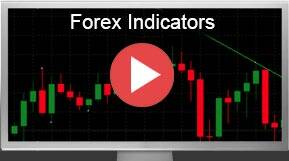
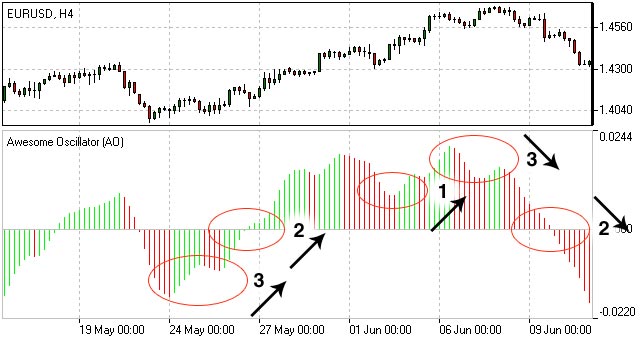



















 SHARE
SHARE


